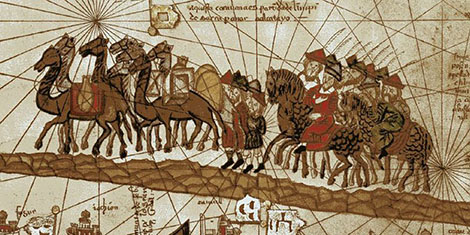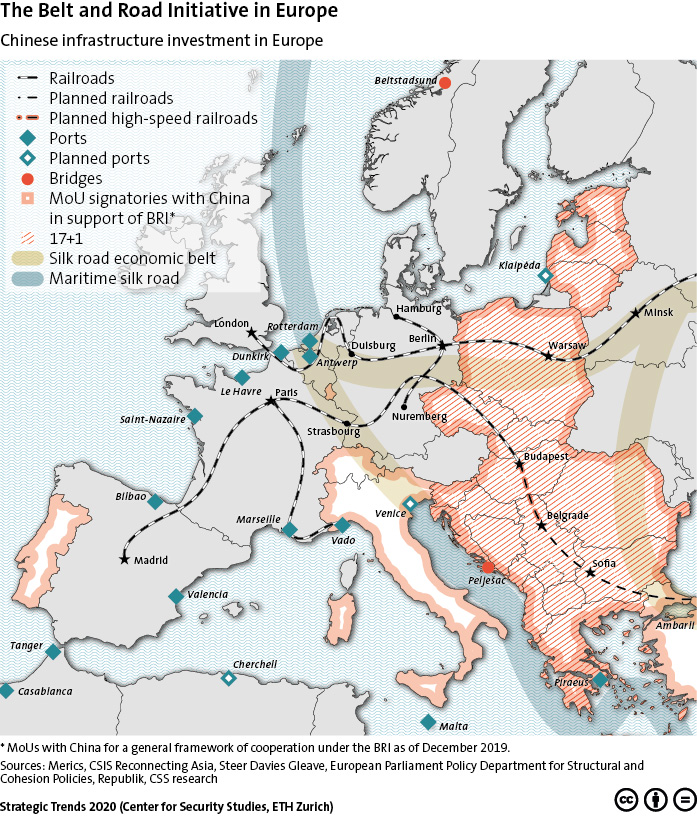
This week’s featured graphic maps the Belt and Road Initiative (BRI) in Europe as of December 2019. To find out more, click here to read this Strategic Trends 2020 chapter by Henrik Larsen and Linda Maduz on how China’s growing influence in Europe has the potential to create new geoeconomic divides.

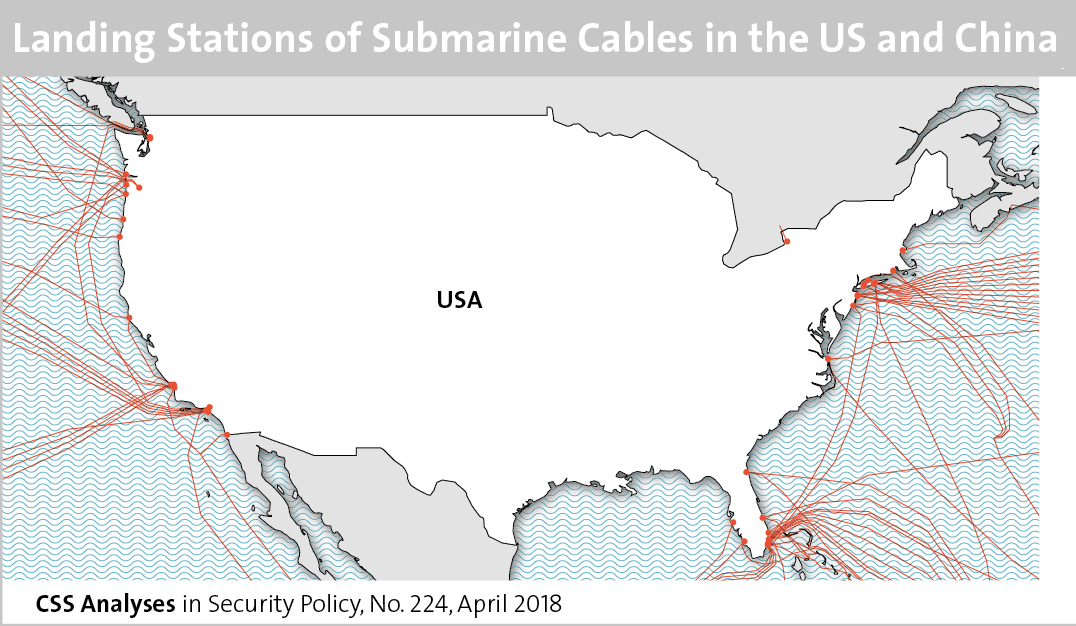
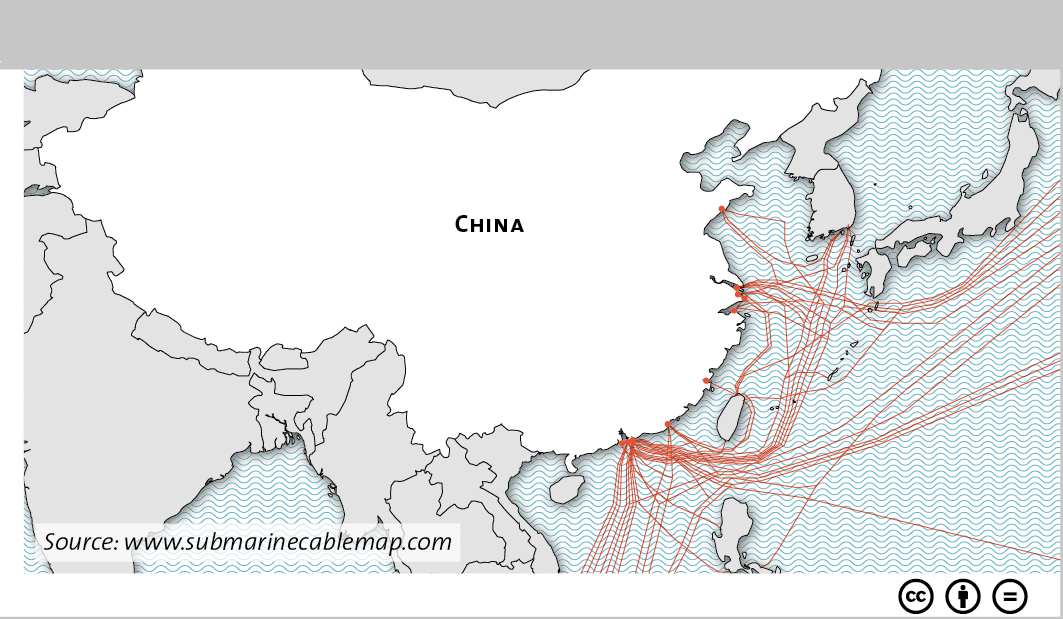 This graphic maps the various landing stations of submarine cables in both the US and China. To find out about cybersecurity in Sino-American relations, see Marie Baezner’s CSS’ Analyses in Security Policy series
This graphic maps the various landing stations of submarine cables in both the US and China. To find out about cybersecurity in Sino-American relations, see Marie Baezner’s CSS’ Analyses in Security Policy series 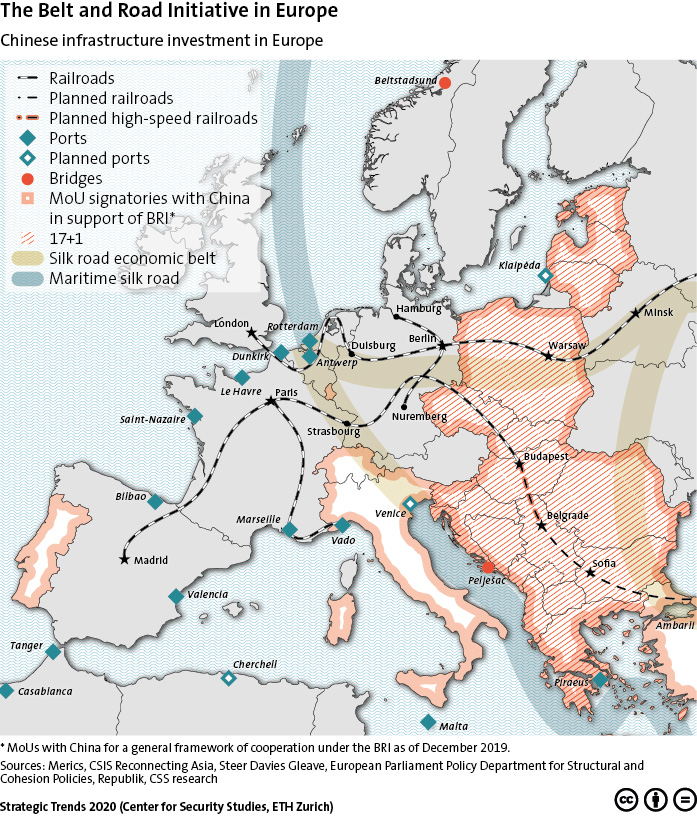 This graphic maps China’s infrastructure investment in Europe related to the Belt and Road Initiative (BRI), including planned and completed railroads, ports and bridges, among other projects.
This graphic maps China’s infrastructure investment in Europe related to the Belt and Road Initiative (BRI), including planned and completed railroads, ports and bridges, among other projects.



